Tesla destination Charger vs. Supercharger: which one is better? Which will charge your car faster? Are they both easily accessible?
“It seems like the only way I’ll be able to charge my Tesla on the go is with a Supercharger.”
Many believe the above to be true, but they’d be wrong. There is another charger that Tesla owners can use while on the go — a Destination Charger.
Tesla’s Supercharger network is probably the best charging network in the world. There are 30,000 Superchargers globally, with 1,101 in North America alone.
A Supercharger can take your car from a 10% to 80% state of charge in less than 30 minutes which is nothing short of incredible. However, it does strain your battery since it exposes it to a high heat.
However, there are problems associated with Superchargers which is why Tesla recommends that you also use Destination Chargers during prolonged periods of driving.
Destination chargers are not as well-known outside the Tesla community, though they play a considerable role throughout Tesla ownership.
Overall, both types of chargers are groundbreaking and practical in their own right, but there are many key differences between the two that we will address in this article.
Table of Contents
Different Charging Levels
Before we delve deeper into this Tesla Destination Charger vs. Supercharger discussion, let’s look at the different charging levels.
Chargers fall under different levels. Levels 1 and 2 are the slowest, while level 3 is the fastest.
Levels 1 and 2 use an AC (Alternative Current) plug — level 1 uses a 120V variant, while level 2 uses a 240V variant.
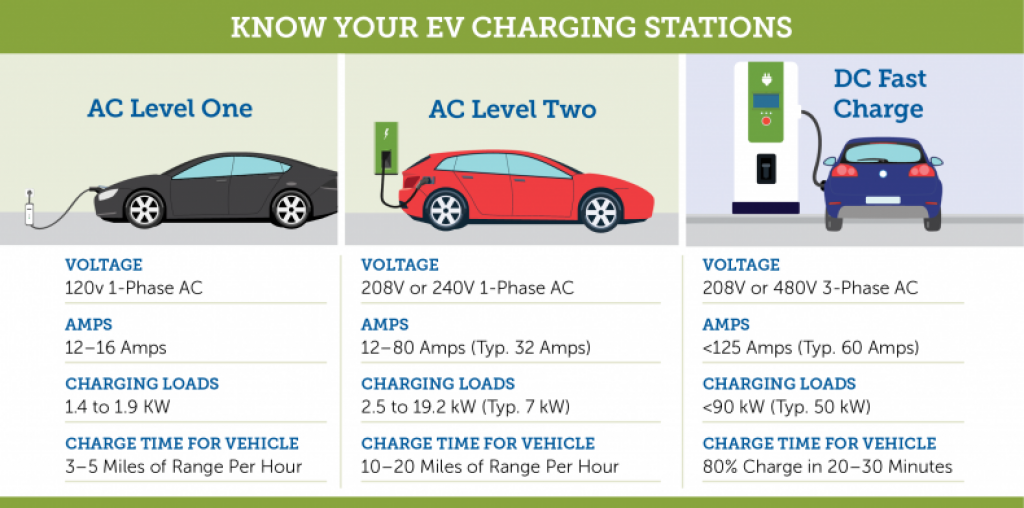
Level 3 uses a DC (Direct Current) plug connected directly to the national grid; this is what’s known as “fast charging.”
A level 3 charger does strain your battery more during charging. As such, you should only use these chargers occasionally to prevent your battery from getting damaged. Furthermore, level 3 chargers can be tough to set up and maintain, which is why they tend to be in public car parks (since they’re government funded).
The most common charger type of the three is the level 2 charger. It provides the benefits of both level 1 and 3 chargers. Like level 1 chargers, level 2 chargers are relatively easy to set up and maintain.
Level 2 chargers also offer decent charging times that don’t harm your EV battery as much as a level 3 charger.
Tesla Destination Charger Vs. Supercharger

The Tesla Destination Charger vs. Supercharger debate is rather complex. So we’ve decided to consolidate all the necessary information regarding the differences between the two into one table.
| Supercharger | Destination Charger | |
|---|---|---|
| Locations | Coffee Shops, Service Stations, and Malls. | Hotel car parks, theme car parks, private car parks. |
| Number Of Them (USA) | 1,101 | 3,867 |
| Charging Power | 250kW (maximum) | 40kW (maximum) |
| What Cars Can Use? | Tesla Cars Only | All Cars |
| Cost | $0.25 per kW | Free For Tesla Owners Who Are On The Premises Where The Destination Charger Is Located |
| Charger Level | Three | Two |
As you can see, both chargers are readily available in the US.
Your Tesla will tell you the location of these different chargers throughout your journey via the satellite navigation system and how long you need to stop at one.
Superchargers are conveniently located in areas where you can stop off and rest while your car charges, such as coffee shops and car parks.
On the other hand, Destination Chargers tend to be located in areas like hotels where you’d leave your vehicle for longer.
What Is Tesla Destination Charging?
Tesla Destination charging is an alternative charging solution that Tesla owners can use if they don’t want to use a Supercharger.
These chargers are not owned or maintained by Tesla. Instead, they’re owned and maintained by the owners of the premises on which they’re located.
Additionally, they’re located in areas such as hotel car parks; this, for instance, allows Tesla owners to charge their cars efficiently while they sleep.
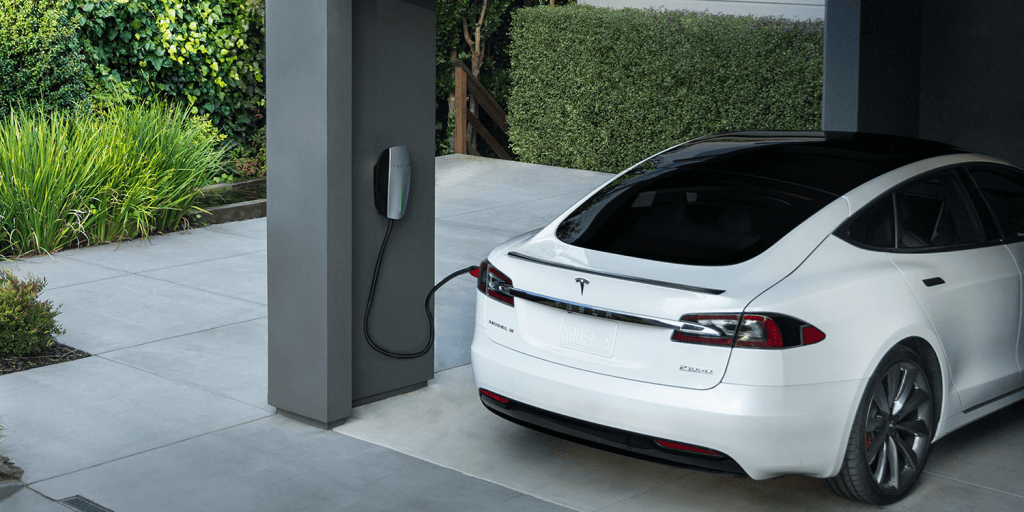
Generally speaking, Destination Chargers aren’t readily available to Tesla owners; they’re usually reserved for customers using the set premises where the charger is located. That being said, anyone can become a charging partner for Tesla and set up their own Destination Charger, hence why Destination Charging is so popular amongst offices and hotels.
Slower Than Supercharging
Destination chargers are slower than Superchargers. The charge rate is only 40kW, which is slow compared to the Supercharger’s maximum charging speed of 250kW.
However, there is an upside to this slower speed since charging via a Supercharger for prolonged periods is unhealthy for the battery. Superchargers place a lot of heat onto the battery cells, which can degrade them over time; you want to avoid this as a new battery pack is not cheap.
What Is Tesla Supercharging?
The Supercharger is at the heart of Tesla’s ultra-fast charging network — it’s the fastest way to charge your Tesla. It started back in 2012 (ten years ago). Today, there are 30,000 Superchargers worldwide.

Tesla Superchargers make tremendous sense, especially on road trips. A Destination Charger will take a few hours to fully charge your car, which is pretty inconvenient if you’re in a rush. Superchargers will charge your car from 10% – 80% in less than half an hour!
Superchargers are grid-tied, meaning they can provide fast charging. As you’ll recall, this intense surge of energy traveling into the battery so fast can stress it out massively. Therefore, you should only use a Supercharger intermittently.
Everything Comes At A Price
Supercharging is not free; it costs around $0.25 per kW. This means that a 150-mile charge will cost around $11 — not too shabby!
Destination Charger Vs. Supercharger (Charging speed compared)
Destination Charger vs. Supercharger, which one is faster?
Remember: Destination Chargers are level 2 AC chargers that aren’t linked to the grid, whereas Superchargers are level 3 DC chargers that are grid-tied.
Being connected to the grid allows Superchargers to reach much higher charging speeds than their Destination Charger counterparts.
Destination Charger Speeds
Destination Chargers can charge a Tesla at a rate of 30 – 44 miles of range per hour. That’s not too bad at all, and it means that your Tesla is guaranteed to have a full charge in just a few hours.
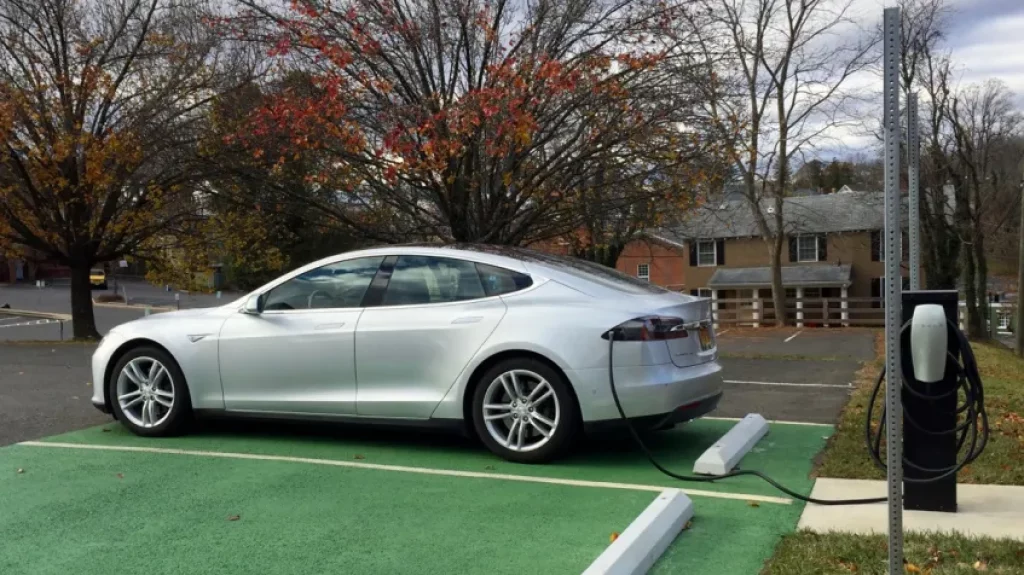
Supercharger Speeds
On the other hand, Superchargers can charge a Tesla at a minimum rate of 172 miles in just 15 minutes. These charges will stress out the battery, but they are perfect if you’re in a rush and need an extra charge.
Service stations on the highway have taken massive advantage of these, allowing Tesla drivers traveling on the highway to get a quick charge without any hassle.
Overall
Superchargers are far faster. They can stress your EV battery more, but this likely won’t be of significant concern to you when you’re in a rush (especially if it only happens occasionally).
Destination chargers are great for overnight stops, but the figures show that they are far slower than Superchargers because they aren’t connected to the national grid.
Which Charging Option Should You Use?
The answer depends on several factors, such as:
- Your location
- Charging history
- Your current circumstances
There are more Tesla Destination Chargers compared to Superchargers. Therefore, it’s likely that there won’t be a Supercharger available in some areas.
If you’re in a location that includes a Tesla Supercharger and a Tesla Destination Charger, you must consider other variables.
If you’ve been using Superchargers to charge your Tesla regularly, you may want to consider using a Destination Charger on your next charge to reduce battery strain. If you rarely use a Tesla Supercharger, then charging your Tesla using a Supercharge once in a while is fine.
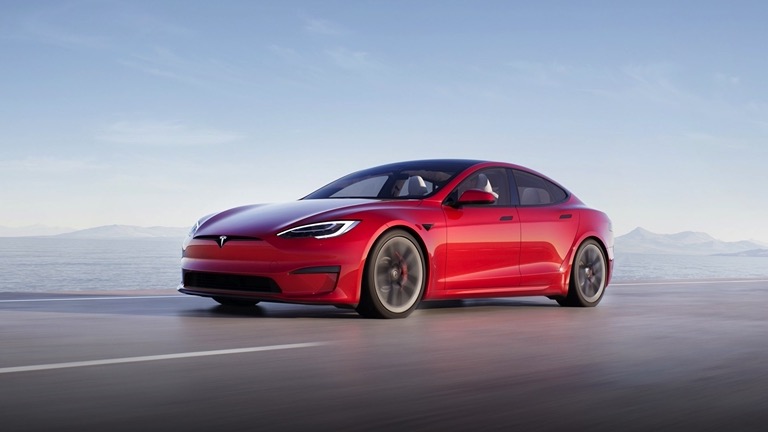
When deciding between a Destination Charger vs. Supercharger, you must look at your current circumstances:
- How much time do you have?
- Is your Tesla’s battery low while you’re rushing to get somewhere?
- Have you stopped at a hotel overnight and need to charge your car?
At the end of the day, it comes down to your circumstances, your charging history, and your location (the most crucial factor).
What Does Each Charger Look Like?
Both chargers have a distinctive look that’ll help you figure out which is which.
Destination Chargers
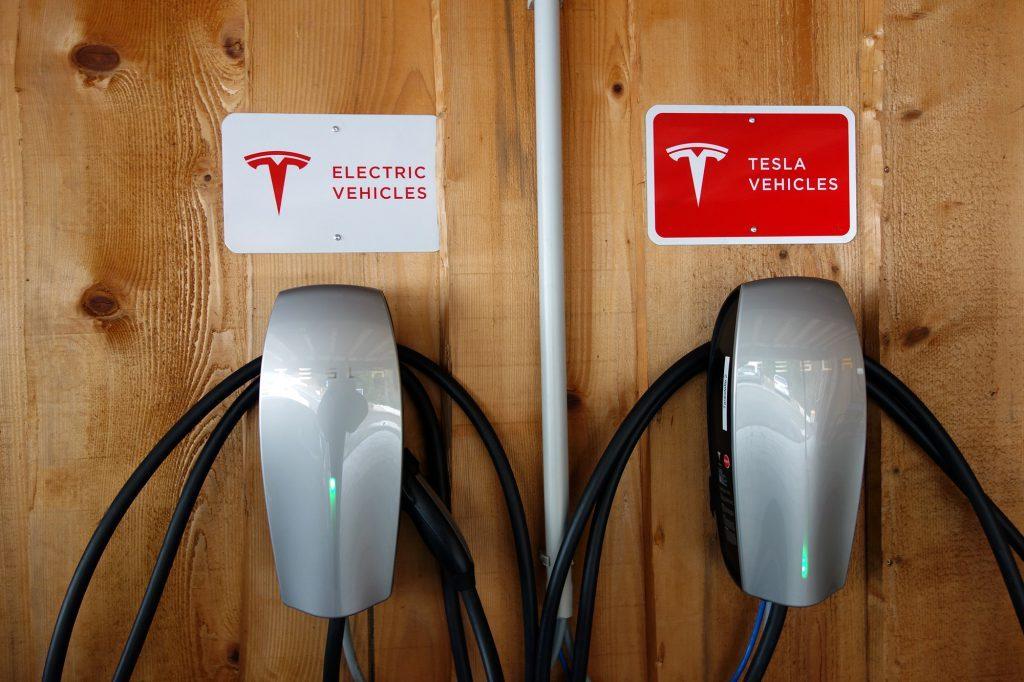
Tesla Destination Chargers are smaller than Superchargers. The front of the charger is usually painted in silver with the Tesla logo on it. They also have the charging cable dangling beneath them.
Furthermore, in most cases, there will be two chargers, each with a sign. “Tesla vehicles” on one and “Electric vehicles” on the other.
Destination chargers tend to be located in their own area within private car parks. They have more expansive car parking spaces with the chargers situated to the far left or right of the car.
Tesla Superchargers
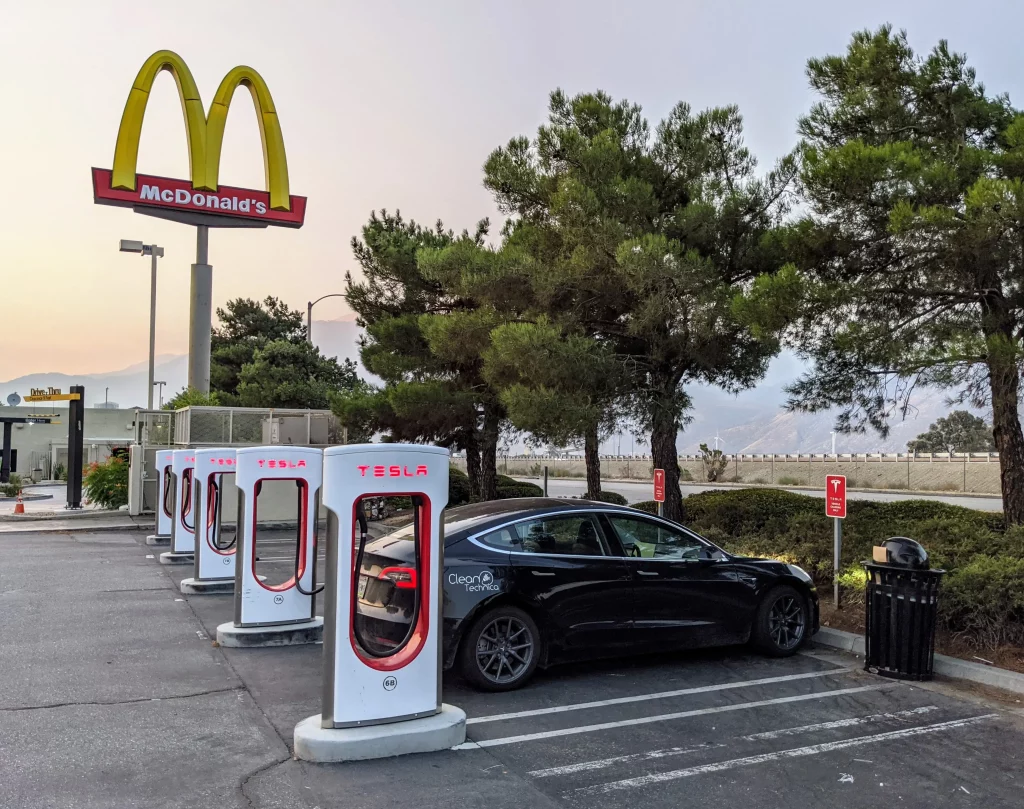
Tesla Superchargers are the iconic red and white chargers with a U-shaped hole in the middle. They have the Tesla logo in red on the top of them. Sometimes they glow in the dark at night to improve visibility.
These are the chargers most people associate with the Tesla brand, and as mentioned earlier, they only charge Tesla cars.
You’ll usually find several Superchargers next to one another, separated by wide parking spots to accommodate your car.
They tend to be located in a separate car park section, often next to other level 3 chargers since they’re all connected to the grid.
The most intelligent part of the Supercharger’s design is that they’re raised slightly on concrete blocks. This helps protect these chargers from possible flooding, making them a lot safer in an emergency.
Final Thoughts
In the end, neither charger in this Tesla Destination Charger vs. Supercharger duel comes out the winner. Both chargers are crucial and assist Tesla drivers massively during extended periods of driving.
A Supercharger is very convenient, but it comes at a cost, both financially and battery-wise. However, while charging your Tesla via a Supercharger costs money, you can use Tesla Supercharger credits to offset the financial hit. In saying that, these costs aren’t that bad. In most cases, they are less than a family meal from Mcdonald’s or KFC.
A Destination Charger is equally as convenient but for other reasons. It allows you to charge your Tesla while staying for prolonged periods at hotels or the office. Sure, they’re much slower but put less strain on your battery than Superchargers.
In short, the best charger depends on your current circumstances.
- How much time do you have?
- What’s your charging history like?
- Most importantly, where are you located?
The answers to these questions will dictate what charger you use and why.

